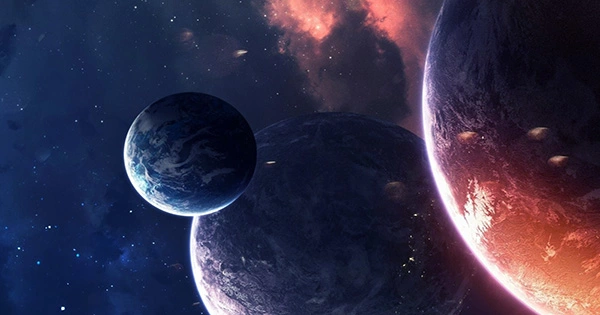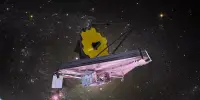The universe may throw some strange curveballs, but an exoplanet discovered 1,232 light-years away is one of the strangest yet.
It’s WASP-193b, and despite being nearly half the size of Jupiter, it’s so light and fluffy that its overall density is equivalent to cotton candy. It has a density slightly higher than that of Earth. It’s a dandelion puff-ball of a planet… if a dandelion puff-ball could be a planet.
Exoplanets like WASP-193b are unusual, but they could help us comprehend planetary evolution, according to an international team led by astronomer Khalid Barkaoui of the University of Liège in Belgium.
The discovery is described in a work that has been approved for publication and is available on the preprint server arXiv.

Looking at all the strange and amazing worlds out there not only contextualizes our Solar System, but also provides a glimpse into how planetary systems arise and evolve.
Because our understanding of planetary formation implies that gas giants near to their stars must have formed elsewhere and migrated inwards, they are a good instrument for this. Furthermore, the star’s irradiation causes many of these worlds to contract.
WASP-193b is an exoplanet that orbits the Sun-like star WASP-193. This star has around 1.1 times the mass and 1.2 times the radius of the Sun, and it is quite near in temperature and age to the Sun. WASP-193b, on the other hand, orbits its star much more closely than any other planet in the Solar System, zooming around once every 6.25 days.
Barkaoui and his colleagues calculated the radius and mass of the world by observing how the star’s light changes as the exoplanet orbits it. It has a radius that is around 1.46 times that of Jupiter. In comparison, its mass is exceedingly small: 0.139 times that of Jupiter.
The density of the exoplanet was calculated using these properties: 0.059 grams per cubic centimeter. In comparison, the density of Earth is 5.51 grams per cubic centimeter. Jupiter has a density of 1.33 grams per cubic centimeter, which makes sense given its cloud cover. The density of cotton candy is 0.05 grams per cubic centimeter.
Few additional worlds with equal density have been discovered, but they do provide some insight into how such fluffy worlds might exist. Close closeness to a star can heat the atmosphere, puffing it out, particularly if the atmosphere is primarily composed of hydrogen and helium.
However, such a world would only look like WASP-193b for a few tens of millions of years, when the star is younger and hotter; also, the star’s heat and winds may soon strip such a tenuous atmosphere.
As a result, there are some issues. While there could be some mechanism for internal heat puffing out WASP-193b’s atmosphere, the reported features of the exoplanet cannot be replicated using advanced planetary evolution models.
The good news is that WASP-193b is a wonderful candidate for further investigation into its environment. This is one of the missions for which the James Webb Space Telescope was developed; the team claims that just one transit observation could give insights into how such a weird, fluffy, old world can exist in the Universe.
The study of the team has been accepted for publication and is now available on arXiv.















